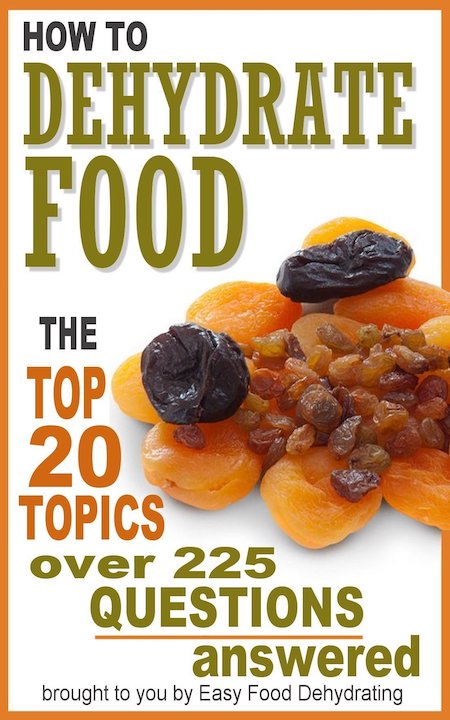- Home
- Easy Food Dehydrating Audio Book
Easy Food Dehydrating Audio Book
Ready to stop wasting food and start saving money? My Easy Food Dehydrating audiobook teaches you how to safely preserve fruits, veggies—even meats—using simple tools you likely already have.
✅ Quick Answer: What is the Easy Food Dehydrating Audiobook?
This audiobook by Susan Gast teaches you how to safely dehydrate fruit, vegetables, and meat for long-term food storage—ideal for beginners, preppers, or anyone tired of wasting food.
Whether you're prepping for a storm or just want healthy snacks for your family, dehydrating makes sense!
Since 2010, I've been obsessed with food dehydrating - so much so that I created my sister site: Easy Food Dehydrating. It all started when I realized I had no real "backup" food available for when there was an emergency.
Living in central Florida, it's a given that we'll lose power when hurricanes hit. Most people only have 3 day's worth of food in their pantries... that's only NINE meals! When our power goes out due to hurricanes, power is out for at least a week.
Then there's the issue of having to throw the freezer stuff out because you can't eat it all in a day, and messing around with ice cubes and coolers isn't "cool."
When the power came back on... I did research and discovered that dehydrating fresh foods when they're in season was the way to go. You don't need electricity to store them (i.e. freezer electric power) and dried goods take up far less room on the shelves. Plus they look good stored in Mason jars!

How This Audiobook Makes Dehydrating Easy
Dehydrating food is easy - when you know how! You don't need many tools; simply a food dehydrator (or use your oven), and a FoodSaver food vacuum sealer, bags, and oxygen absorbers.
Speaking of dehydrators: Learn about Nesco and Excalibur food dehydrators along with the FoodSaver vacuum-sealer machine. Discover how to use Vacuum-Sealer bags, Mylar bags, Oxygen Absorbers, and Plastic Bins and Buckets and how to safely store your dehydrated goodies.
Easy Food Dehydrating and Safe Food Storage contains information on dehydrating, storing, and re-hydrating your foods. Also included are easy-to-make recipes the whole family will enjoy.
To close out the audiobook, let's not forget why you should begin dehydrating food in these uncertain times - and how having dehydrated food on hand in emergency situations could just save your family's lives. Be a good neighbor, and spread the love.
Always Have Food on Hand – Start Dehydrating Today
What You’ll Learn Inside:
- How to Dehydrate Fruit, Vegetables, and Meat in Six Simple Steps
- Your Dehydrating Fruit and Veggie Headquarters
- Dehydrating Pet Food
- Make Your Own Dog Food
- Oft-Missed Step: Conditioning Dehydrated Food
- How to Store Dehydrated Food Safely
- Food Dehydrators, the Excalibur and Nesco 'starter' models
- FoodSaver brand Vacuum Sealer
- Re-hydrating Food by putting the water back in!
- Easy Dehydrated Food Recipes ~ Main meals, Desserts, and Extras!
- Frequently Asked Questions - along with their answers
- Why dehydrate food at all?
Thank you for listening, and happy dehydrating!
PS - If you'd rather have a paperback or eBook of Susan's Easy Food Dehydrating and Safe Food storage, click on over to this page to learn more.
Common Food Preservation Methods Explained
The most popular and common methods of preserving foods to extend their shelf life include:
- Drying/Dehydrating: Removing moisture prevents the growth of bacteria and molds because water activity is too low. Sun drying (raisins) or using an electric dehydrator (fruit leathers, jerky) is popular in homes today.
- Refrigeration/Freezing: Lowering the temperature, both above and below freezing, slows down deterioration tremendously. This keeps freshness and buys more time before spoiling. Refrigerating is the most common short-term preservation.
- Canning: One of the most popular home techniques. Canning uses sterilized glass jars and high heat treatment to kill microorganisms and seal foods in an airtight environment. Acid foods like fruits and pickles can use boiling water while low-acid items like vegetables require a pressure canner to achieve higher heat needed for microbial kill.
- Salting/Curing: An ancient preservation method that works by dehydrating foods and creating unfavorable salty conditions for microbes. Salting vegetables, fish, and meats (to make things like prosciutto) are common.
- Jams/Jellies: Using large amounts of sugar and an acidic environment renders the fruit or juice dense, tasty, and uninhabitable for spoilage organisms. The sugar acts as a natural preservative once concentrations get very high.
Today refrigeration is by far the most common for short-term storage and freezing/canning are popular methods for storing foods much longer term, up to years with proper practice. Sugar, salts, and acid enable practical preservation too in the right recipes and applications.
After reading this list, you can see why I choose to use an electric dehydrator. Time saver! Ease of use!
Frequently Asked Questions About Food Dehydrating
Do I need a special machine to dehydrate food at home?
Do I need a special machine to dehydrate food at home?
Nope! A food dehydrator is recommended, but you can also use your oven at a low temperature if you're just starting out.
Will dehydrated food last a long time?
Will dehydrated food last a long time?
Yes, when stored properly using vacuum-sealed bags or Mason jars with oxygen absorbers, dehydrated foods can last months—or even years.
Is this audiobook beginner-friendly?
Is this audiobook beginner-friendly?
Absolutely. Susan walks you through every step, from choosing a dehydrator to safe storage and rehydrating techniques.
Thanks for listening—and for caring about what goes on your plate. Whether you're in it for emergency prep, shelf-stable snacks, or just plain curiosity, this audiobook has everything you need to start dehydrating the smart way.
Be sure to check out the paperback or eBook version here, and happy dehydrating!


















